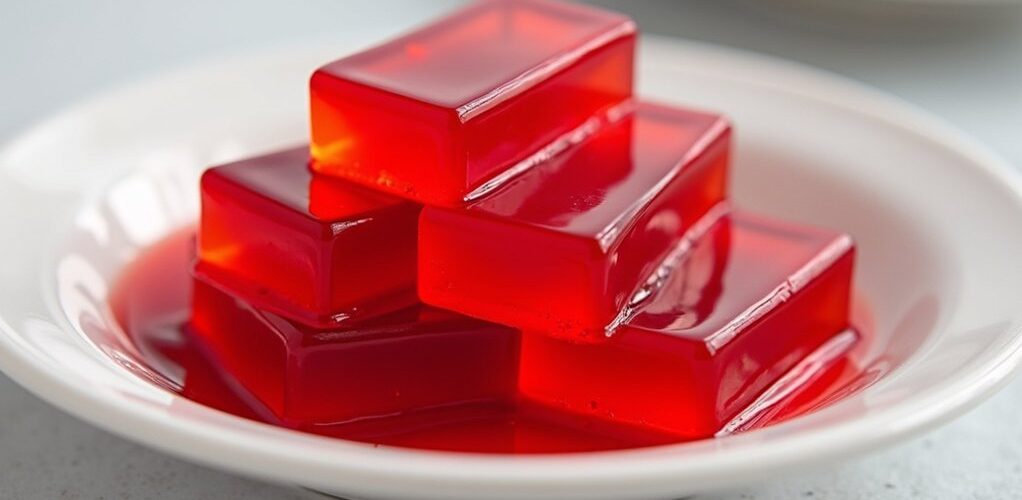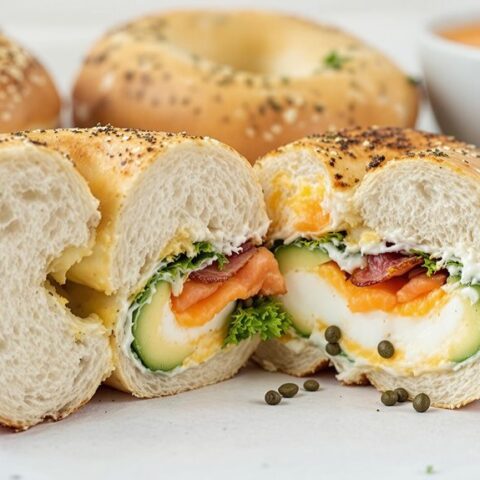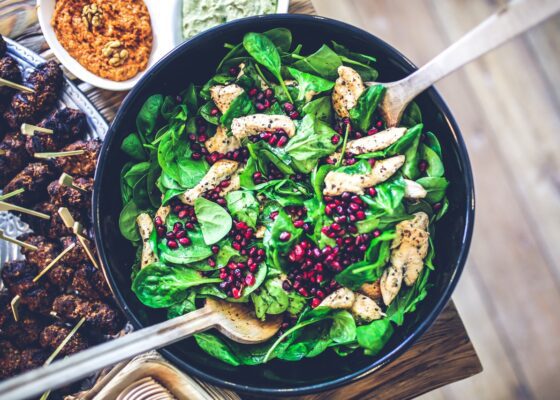
Sugar-free Jello requires careful consideration for low-carb dieters despite its zero-carb label claims. While technically low in carbohydrates, hidden ingredients like maltodextrin and sugar alcohols can impact blood sugar levels and potentially disrupt ketosis. The actual carbohydrate content depends on serving size interpretation and individual metabolic responses. Careful label reading and blood sugar monitoring help determine its true impact. Understanding the complex relationship between ingredients and metabolic effects reveals the full story behind this popular dessert.
Key Takeaways
- Sugar-free Jello can contain hidden carbohydrates despite "zero carb" claims, particularly from maltodextrin and sugar alcohols.
- One serving typically contains less than 1g of carbs, but multiple servings can lead to significant carbohydrate accumulation.
- Maltodextrin, commonly used as a carrier for artificial sweeteners, can spike blood sugar levels similar to regular sugar.
- Individual responses vary, with some people experiencing blood sugar spikes that could potentially disrupt ketosis.
- Reading ingredient labels carefully and monitoring serving sizes is crucial for maintaining a true low-carb diet.
Understanding Sugar Free Jello's Nutritional Claims
When examining the nutritional claims of sugar-free Jello, consumers often encounter confusing and seemingly contradictory information about its carbohydrate content.
While packages may prominently display "zero carbs" on their labels, the reality is more complex than these marketing claims suggest.
Marketing claims of zero carbs often mask a more nuanced reality about the actual carbohydrate content in food products.
Sugar-free Jello products frequently contain ingredients like maltodextrin and sugar alcohols that can impact blood sugar levels, despite their apparent low-carb status.
Manufacturers can legally label products as having zero carbohydrates if the content falls below 1g per serving, even when trace amounts exist.
This labeling practice creates potential confusion for individuals carefully monitoring their carbohydrate intake.
To make informed decisions, consumers should carefully scrutinize ingredient lists, particularly noting components ending in "ose" or "tol," which may indicate hidden carbohydrate sources.
Understanding the difference between ketosis and ketoacidosis is crucial for individuals following a ketogenic diet, as it affects how they manage their carbohydrate intake and overall health.
The Hidden Impact of Maltodextrin
While sugar-free Jello claims to be carb-free, its maltodextrin content poses a significant concern for those monitoring their blood sugar levels. The ingredient, commonly used as a carrier for artificial sweeteners, can contribute approximately 0.5g of carbohydrates per serving despite not being clearly indicated on nutrition labels. Careful examination of product labels becomes essential for consumers following low-carb diets, as maltodextrin's presence can undermine their dietary goals through unexpected blood sugar spikes. It's important to note that hidden added sugars in various products can similarly disrupt ketosis, making it crucial for individuals on low-carb diets to read ingredient lists diligently.
Maltodextrin's Blood Sugar Effects
Although sugar-free jello may appear to be a safe choice for those watching their carbohydrate intake, the presence of maltodextrin poses hidden complications for blood sugar management.
Despite product labels indicating zero sugar content, maltodextrin's molecular structure closely resembles glucose, causing similar metabolic effects in the body.
When consumed, maltodextrin can trigger blood sugar spikes comparable to regular sugar, making it particularly concerning for individuals monitoring their carbohydrate consumption.
While a single serving may contain only 0.5g of carbohydrates from maltodextrin, these small amounts can accumulate throughout the day, especially when consuming multiple servings or other products containing this ingredient.
For those following strict low-carb diets or managing blood sugar levels, understanding maltodextrin's impact is essential for making informed dietary choices.
Reading Hidden Label Ingredients
Understanding hidden label ingredients requires a closer examination of product packaging beyond the basic nutritional information.
When ingredients like maltodextrin appear on labels, consumers need to recognize their potential impact on blood sugar levels, even when products claim to be sugar-free.
Products containing less than one gram of carbohydrates per serving can legally display zero carbs on their nutrition labels, making it essential to scrutinize ingredient lists carefully.
Many sugar alcohols and ingredients ending in "ose" indicate the presence of carbohydrates that can affect blood sugar levels.
This knowledge is particularly important for individuals following ketogenic or low-carb diets, as these hidden ingredients can unknowingly impact their dietary goals and potentially disrupt their desired metabolic state.
Reading Between the Lines: Label Analysis
While sugar-free Jello labels may show zero carbohydrates, careful examination reveals hidden ingredients like maltodextrin that can affect blood sugar levels. Understanding serving sizes becomes essential, as manufacturers can legally list zero carbs when the amount per serving falls below 0.5 grams, potentially misleading consumers tracking their carbohydrate intake. A thorough analysis of ingredient lists helps identify sugars and sugar alcohols through their "ose" and "tol" endings, enabling consumers to make more informed dietary choices. Additionally, hidden sugars may appear under various names, leading to unintended carb consumption and affecting ketosis maintenance.
Hidden Ingredients Matter Most
Since careful label analysis reveals essential details beyond basic nutrition facts, consumers seeking truly low-carb options must scrutinize sugar-free Jello's ingredient list.
The hidden ingredients, particularly those ending in "ose" like maltodextrin, can greatly impact blood sugar levels despite zero-carb claims on nutrition labels. While serving sizes may indicate no carbohydrates, products often contain trace amounts that accumulate and affect strict dietary plans.
Sugar alcohols and other sweetening agents present additional concerns for those monitoring their carbohydrate intake. These hidden ingredients can metabolize similarly to traditional carbohydrates, potentially disrupting ketosis or other low-carb dietary goals.
Understanding these less obvious components helps consumers make more informed decisions about whether sugar-free Jello truly aligns with their nutritional requirements.
The Truth Behind Zero
Labels declaring "zero carbs" on sugar-free Jello products require closer scrutiny than many consumers might realize.
While manufacturers can legally round down carbohydrate content under 1 gram to zero, this practice may mask the presence of actual carbs in these products.
The inclusion of ingredients like maltodextrin, despite their absence from the total carb count, can still impact blood sugar levels.
Sugar-free Jello packaging often utilizes serving sizes that minimize reported carbohydrate content, potentially misleading consumers about their total carb intake.
Understanding the significance of ingredient names ending in "ose" and carefully examining serving sizes remains vital for those monitoring their carbohydrate consumption.
For accurate dietary tracking, consumers should look beyond the promotional "zero" claims and thoroughly evaluate the complete ingredient list.
Reading Serving Sizes Carefully
A thorough examination of serving size information reveals essential details about sugar-free Jello's true carbohydrate content. When monitoring total carbs on a keto diet or managing blood sugar levels, understanding actual serving sizes becomes vital.
While sugar-free jello gelatin might seem like the perfect low carb dessert to satisfy sugar cravings and sweet tooth cravings, consumers often consume multiple servings without realizing it.
Manufacturers can label products as having zero carbs per serving when they contain less than one gram, making careful label analysis essential.
Even artificial sweeteners and ingredients like raspberry gelatin may contain hidden carbs that accumulate when portions exceed recommended serving sizes.
To make sure you're staying within your carb limits, consider measuring portions and tracking cumulative intake, especially when adding mix-ins like heavy whipping cream.
Blood Sugar Response and Individual Variations
Despite being marketed as zero-carb alternatives, sugar-free jello products can trigger unexpected blood sugar responses that vary considerably from person to person. Ingredients like maltodextrin, which metabolizes similarly to sugar, can cause significant glycemic impacts even in small servings.
Individual metabolic responses to sugar-free jello fluctuate based on multiple factors, including the time of day and personal tolerance levels. Some consumers report consistent blood sugar spikes from modest portions, while others experience minimal effects from the same amount.
This variability underscores the importance of monitoring individual responses and reading ingredient labels carefully, particularly noting components ending in "ose" that may influence blood glucose levels. Understanding these personal variations can help consumers make more informed decisions about incorporating sugar-free jello into their low-carb lifestyle. A ketogenic diet, by reducing blood glucose levels and enhancing insulin sensitivity, may help stabilize responses to sugar-free products.
Sugar Alcohols and Their Role in Sugar Free Jello
Sugar alcohols serve as vital sweetening agents in sugar-free Jello products, though their metabolic effects warrant careful consideration. Common sugar alcohols like maltitol and sorbitol can affect blood sugar levels differently among individuals, challenging the perception of these products as completely carbohydrate-free. While manufacturers often market these products as sugar-free, the presence of sugar alcohols requires consumers to exercise discretion. These compounds metabolize differently than traditional sugars, potentially causing unexpected blood sugar responses. Additionally, the inclusion of maltodextrin alongside sugar alcohols contributes to the total carbohydrate content, even when labeled as containing zero carbs per serving. Understanding these nuances becomes important for individuals monitoring their carbohydrate intake, making it essential to carefully review ingredient labels rather than relying solely on "sugar-free" claims. For those following a ketogenic diet, it's crucial to opt for keto-friendly sweeteners like stevia or erythritol to maintain ketosis while satisfying sweet cravings.
Real World Experiences From Keto Dieters
While countless keto dieters turn to sugar-free Jello as a seemingly safe dessert option, real-world experiences reveal a more complex reality regarding its impact on ketosis and blood sugar levels.
Keto Community Insights from various users highlight the importance of individual response and careful label reading when incorporating this treat into a low-carb lifestyle.
- Many users report unexpected blood sugar spikes despite "zero carb" labeling.
- Personal responses vary greatly, with some maintaining ketosis while others experience disruption.
- Experienced keto dieters emphasize the presence of hidden carbs through ingredients like maltodextrin.
- Small serving sizes can still trigger unwanted metabolic responses in sensitive individuals.
These diverse experiences underscore the need for personal experimentation and vigilant ingredient monitoring when choosing sugar-free desserts. Regular monitoring of blood sugar and ketones, as advised during the keto diet adjustment phase, is crucial to avoid unwanted metabolic effects.
Making Informed Choices for Low Carb Living
Making informed decisions about low-carb products requires a thorough understanding of ingredient labels and nutritional content beyond surface-level marketing claims. Many dietary misconceptions arise from trusting "zero carb" labels without investigating the complete ingredient list, particularly regarding sugar alcohols and maltodextrin. To make truly informed choices, consumers should consider alternatives to commercial sugar-free products. Creating homemade versions allows for complete control over ingredients, while natural options like berries with approved sweeteners can satisfy sweet cravings without hidden carbs. Additionally, tracking personal responses to different products helps identify which sugar substitutes work best for individual dietary goals. Understanding that serving sizes may mask small amounts of carbohydrates enables better decision-making for maintaining strict low-carb lifestyles. Low-carb diets can provide all necessary nutrients through meat and low-carb vegetables, often exceeding vitamins and minerals found in high-carb diets.
Alternative Sweet Treats for Strict Keto
Those following a strict keto diet can satisfy their sweet cravings with natural fat bombs, which combine healthy fats with sugar-free ingredients to create satisfying treats.
Zero-carb dessert options, including homemade sugar-free jello and berry-based treats sweetened with approved alternatives, provide flexible choices for maintaining ketosis.
These alternatives can be customized with various natural sweeteners like erythritol or stevia, allowing individuals to adjust recipes according to their specific dietary requirements while staying within their carb limits.
Many keto desserts utilize sugar substitutes such as erythritol and stevia, enabling the enjoyment of sweet treats while adhering to ketogenic principles.
Natural Sweet Fat Bombs
Natural sweet fat bombs present an ideal solution for keto dieters seeking to satisfy their sweet cravings without compromising ketosis.
These homemade treats combine healthy fats from ingredients like nut butters and coconut oil with sugar-free sweeteners, creating satisfying desserts that align with ketogenic principles.
Common variations of fat bombs include:
- Chocolate-based bombs made with sugar-free cocoa
- Peanut butter and cream cheese combinations
- Berry-flavored varieties using natural extracts
- Coconut-based treats with vanilla undertones
The ability to portion these treats into small, manageable sizes helps control caloric intake while maintaining ketosis.
Zero-Carb Dessert Options
When searching for zero-carb dessert options, individuals following a strict ketogenic diet can explore numerous alternatives beyond traditional sugary treats. Modern dessert innovations have introduced creative solutions that satisfy sweet cravings while maintaining ketosis. Natural ingredients combined with sugar alternatives provide satisfying options without hidden carbohydrates.
| Dessert Type | Key Benefits |
|---|---|
| Homemade Jello | Complete control over ingredients |
| Berry Cream | Natural sweetness with healthy fats |
| Keto Truffles | Rich satisfaction, portion control |
| Sugar-free Mousse | Light texture, customizable flavors |
These alternatives offer reliable options for those committed to maintaining their low-carb lifestyle. By choosing desserts made with natural sweeteners like erythritol or stevia, individuals can enjoy treats without compromising their dietary goals or experiencing unexpected blood sugar spikes.
The Science Behind Zero Carb Claims
The seemingly simple "zero carb" claim on sugar-free Jello packaging requires closer scientific scrutiny, as manufacturers can legally label products as having zero carbohydrates if they contain less than one gram per serving. This Label Deception stems from FDA regulations that allow rounding down, potentially misleading consumers about the true carbohydrate content. The science reveals several important considerations:
- Maltodextrin, a common ingredient, contains carbohydrates that impact blood sugar.
- Products labeled "zero carb" may actually contain up to 0.5g of carbs per serving.
- Ingredients ending in "ose" often metabolize similarly to sugars.
- Multiple servings can accumulate meaningful amounts of hidden carbs.
Understanding these scientific principles helps consumers make informed decisions, particularly those following ketogenic or low-carb diets who need precise carbohydrate tracking. Additionally, it is crucial to prioritize high-quality fats on a low-carb diet to manage cholesterol levels effectively, as the types of fats consumed can significantly impact overall health.
Serving Size Secrets and Marketing Tactics
Behind every sugar-free Jello package lies a complex web of marketing strategies designed to influence consumer perception of carbohydrate content. Manufacturers carefully calculate serving sizes to maintain the appearance of zero carbs, taking advantage of labeling regulations that allow products containing less than one gram of carbohydrates per serving to be marketed as carb-free. This marketing approach can mislead consumers who may not realize that consuming multiple servings adds up to measurable carbohydrate intake. The presence of ingredients like maltodextrin, while technically sugar-free, can still impact blood sugar levels. Despite the "zero carb" claims prominently displayed on packaging, consumers need to carefully examine serving sizes and ingredient lists to make informed decisions about how these products fit into their low-carb dietary goals. It's important to note that the Keto diet's strict carbohydrate limit ensures consistent ketosis, making it crucial for individuals following this diet to be vigilant about hidden carbs in processed foods.
Tracking Tools and Methods for Accuracy
Maintaining accurate carbohydrate tracking requires sophisticated tools and methods, particularly when monitoring sugar-free Jello consumption in a low-carb diet.
Modern technology and systematic approaches have made carb tracking more precise and manageable for health-conscious consumers.
Digital tools and structured methods have revolutionized carbohydrate monitoring, making it easier for health-focused individuals to track their nutritional intake.
- Digital food diary apps with extensive databases for accurate ingredient analysis
- Blood glucose monitoring systems to track individual responses
- Kitchen scales and measuring tools for precise portion control
- Personal log books for recording reactions and patterns
These tracking methods enable individuals to make informed decisions about their sugar-free Jello consumption while maintaining their carbohydrate goals.
Best Practices for Including Sugar Free Jello in Your Diet
Armed with reliable tracking methods, individuals can now implement effective strategies for incorporating sugar-free Jello into their low-carb lifestyle. When making Dietary Considerations, understanding proper portion control and ingredient awareness becomes essential for maintaining ketosis and managing blood sugar levels.
| Practice | Implementation |
|---|---|
| Portion Control | Measure servings accurately |
| Label Reading | Check for hidden carbs |
| Pairing Options | Add keto-friendly toppings |
| Timing | Space servings throughout day |
For best results, consumers should consider making homemade versions using approved sweeteners and natural ingredients. When choosing store-bought options, careful label inspection helps identify hidden carbohydrates like maltodextrin. Regular blood sugar monitoring after consumption guarantees the product aligns with individual metabolic responses, allowing for personalized dietary adjustments as needed.
Frequently Asked Questions
Is Sugar-Free Jello Low Carb?
Sugar-free Jello generally maintains low carb status for dietary considerations, though trace amounts from maltodextrin may affect blood sugar levels. Individual responses vary, making careful label reading essential.
Are Sugar-Free Sweets Low Carb?
Sweet alternatives marketed as sugar-free aren't necessarily low carb. Hidden ingredients like maltodextrin and sugar alcohols can contribute to carbohydrate content, making them potentially unsuitable for strict low-carb diets.
Is Sugar-Free Jello a Good Snack for a Diabetic?
Sugar-free Jello can be one of many diabetic friendly options, but individual responses vary. While low in calories and carbs, its maltodextrin content may affect blood sugar levels in some people.
Is Sugar-Free Jelly Low in Carbs?
Sugar-free jelly typically contains minimal carbohydrate content, with approximately 0.5g per serving. However, hidden ingredients like maltodextrin may affect blood sugar levels despite the product's low-carb marketing claims.
Conclusion
While sugar-free Jello can fit into a low-carb lifestyle, consumers should approach it with informed awareness. Though marketed as zero-carb, the presence of maltodextrin and sugar alcohols may impact blood sugar levels differently among individuals. By understanding serving sizes, reading labels carefully, and monitoring personal responses, people can make educated decisions about incorporating sugar-free Jello into their dietary plans without compromising their low-carb goals.










No Comments